Valladolid, Sultaness of the East
Next to Merida, the largest and most famous colonial city on the Yucatan Peninsula is Valladolid. Both cities are named after cities in Spain. Valladolid in Spain has the distinction of being, among other things, the place where Christopher Columbus died. In the Yucatan, Valladolid was established by another famous conquistador, Francisco de Montejo, like Merida, in 1543, the year after he established the city of Merida.
Long ago Valladolid was given the nickname of the Sultaness of the East, indicating its function as the business center of the Eastern Peninsula. But it seems to have always been number three, behind Merida (number one) and Campeche (number two) in the hit parade of colonial cities here. When we first moved to Merida, lo these many years ago now, we traveled to Valladolid on the way to somewhere. On the way to Tulum, or on the way back from Cancun or Playa del Carmen. We would stop by and have a delicious lunch around the patio at the Méson del Marqués Hotel, look around the zocalo and not find much, and then move on. Valladolid didn't feel like a destination in our minds, especially compared to the places we were going to or coming from. Cancun, Campeche, Playa del Carmen, Merida... they have all seen an influx of government money for sprucing things up over the past few years, building hotels or renovating colonial facades and making the centro historico more attractive to tourists. Finally, about 2009 or so, it was Valladolid's turn.
Why Valladolid?
So what makes Valladolid interesting? First, there is a lot of history here. The very first city in Mexico called Valladolid had its named changed to Morelia in Michoacan. The next settlement called Valladolid was set up near its current location in a place filled with mosquitoes and humidity (in the Yucatan? no, really?) and after protests from the early Spanish settlers, was moved to where it now stands.
Of course, the current location was then a Mayan settlement, and the fact that the Spaniards tore down the settlement (which probably included a sacred site or ten) and used the stones to build their colonial town just encouraged the local Mayan population to revolt, which had to be "put down" (according to Wikipedia). This should have been an indication to the Spaniards of the nature of the Mayans in this locale, but apparently it was not.
They were reminded again, however, when the Caste War broke out near Valladolid sometime in the early 1840's. The spark that ignited the fire of the Caste War was the execution of three Mayans over land disputes, a consistent problem between conquering Spaniards and the Mayans whose party they insisted on crashing. At one point during the Caste War, Valladolid was completely under Mayan rule, with every Spaniard and Criollo (Mexican-born Spaniards) either fleeing to Merida or dead in the process. Eventually, after Merida stumbled into victory over the Mayans that had surrounded the city, Valladolid came back under colonial rule but it never quite regained its previous economic or cultural importance... until now.
Valladolid Comes Into Its Own
The last time we visited Valladolid, we had a distinctly different experience and impression of this mysterious Sultaness. Dare we say it? Valladolid is starting to seem almost hip.
First of all, there's the zocalo itself. Once a completely sleepy place, with a few huipile-clad women selling huipiles, it now seems to be bustling and humming every time we're there. Yes, the same ladies are selling huipiles, but they are selling other locally-made products too, including Barbie-doll huipiles (how hip is that?), and doilies made of the same beautiful embroidered flowers that you see on huipiles. We always pick up a few of those, as they make great drink coasters. And Working Gringa was quite thrilled with a woven sisal purse she picked up at our last visit for only 70 pesos (a little more than $6 US).
On the main plaza now there's the Maya Cafe, an espresso bar to the left of the Maria de la Luz Hotel/Restaurant which serves a great capuccino and is owned by a Merida/Valladolid couple. Yalat, the gift shop on the corner near the Meson de Marques, is owned by a member of the famous Barbachano family (Miguel Barbachano was the first governor of Yucatan), as is the dress shop and coffee bar directly opposite the Meson, named La Cantina Restaurante Bar. In La Cantina, we were drawn to the locally-made Surya jams and other concoctions (we bought the Mermelada de Mango con Chile) that we found rather high-priced, but uniquely tasty (they would make great gifts...). What clinched the deal was the label, claiming the jam was "Made with backyard mangoes from the Mayan Villages of Yucatan". Que chido!
What we discovered is that there is more going on in Valladolid than immediately meets the eye.
From Vogue to Valladolid
On one of our last visits, we met up with Nicolas Malleville and his lovely partner, Francesca. Now what, you might ask, is a world-class male fashion model doing in Valladolid, other than passing through? As it turns out, quite a bit. Years ago, Nicolas bought a colonial building on the beautiful street that runs diagonally from the zocalo area to the San Bernardino Monastery, the Calle de Los Frailes (Street of the Friars). At the same time, he bought a beachfront lot in Tulum and a plot of land near Coba. And then he proceded to create a little empire of seductive beauty, which he has also expanded to Merida.
Coqui Coqui (a nickname he picked up somewhere along the way and then bestowed upon his endeavors which also happens to be the name of a Puerto Rican frog) is a four-location web of experience designed for the rich, the famous and the inquisitive. Coqui Coqui in Tulum is an intimate beachfront hotel with a few luxurious rooms, a tiny spa and a beach. Oh, and an uninterrupted view of the Caribbean. In Coba, Nicolas built a destination small hotel with seven rooms, each one with a unique theme. And in Valladolid, he has created the Coqui Coqui perfumery and spa (on the Calle de Los Frailes). The front room where they sell the perfume is dominated by a huge dark wood bookshelf, displaying the Coqui Coqui perfumes that Nicolas produces in Valladolid. In the rooms in the back, the spa is exquisitely decorated and appointed. We didn't indulge in a treatment when we were there, but we did see a room where indulgence was encouraged, complete with a clawfoot bathtub, elegant mirrors, candles and fluffy towels, accompanied by the Coqui Coqui scents. We had to pinch ourselves to remember we weren't in Paris. (Well, just stepping outside into the heat helped too...). While he may not be terrifically organized and while flying to photo shoots around the world might make it a bit hard to run his Yucatan empire, Nicolas is an expert at the art of creating caché, and nowhere is this more evident than at his ventures in and around Valladolid. We highly recommend a visit, and if you're like us, you'll be hard pressed to resist a perfume purchase at the very least.
Casa de Los Venados
On our next visit to Valladolid, we spent the afternoon with John and Dorianne Venator (pronounced like "senator" but with a "V"). This couple spends most of the year in Chicago, where John works (as of 2008) as the president and CEO of the CompTIA Educational Foundation, an industry trade association. He and Dorianne have long been fans of Mexican folk art, and a few years ago, set about looking for a home in Mexico. They originally considered Oaxaca, but decided that building in Oaxaca was going to be too much trouble. They had a condo in Cancun, John knew Puebla from living there during college and they had spent time in Merida as well. But nothing had fallen into place for them. One day, they happened to drive into Valladolid, looked at some houses there for sale, and fell in love (you can read the entire story here).
They eventually purchased an old colonial just off the main square which they have named Casa de Los Venados (House of the Deer), a name that relates to their surname and is a tribute to the deer which are a revered animal in the state of Yucatan. They maintained the historically-protected facade, but inside they constructed a massive and modern 18,000 square foot compound... sort of a house-cum-private-hotel that serves as a place to entertain friends and visiting dignitaries, and as a museum for their massive collection of Mexican folk art. Their art collection, by the way, rivals the folk art in the Museo de Arte Popular in Merida (they are big supporters...).
When we visited, the Venators graciously showed us around, pointing out magnificent paintings, sculptures, carved furniture, pots and more. Many of the pieces of art and craft that were created for the house and feature deer, as befits the name. The entrance to the house alone is awe-inspiring: a colorful and playful 11 by 17 foot framed high relief, ceramic mural, commissioned from Luis and Jorge Valencia of Oaxaca, depicting a Mayan village scene. This ceramic mural was created in Oaxaca and then shipped and installed in the entrance to Casa de Los Venados... and it is spectacular (what you see in the photo to the left is just a detail). The Venators took us through all the rooms of the huge house, explaining that what we saw was just a fraction of their collection. All we can say is wow...
The Venators could be the gringo Medicis of Valladolid, although their reach is far beyond the city limits. They are serious art collectors, both in Mexico and in Chicago, whose collecting adds support to many Mexican artists. Their hard-won philosophy of life is that there are two ultimate luxuries in life: Time and Space. They have created a luxurious space in Valladolid, which may someday include an art museum open to the public, as well as a space suitable for public events. And they hope soon to create more time to spend in their chosen city of Valladolid. Not only do they love the peace and tranquility that Valladolid has made available to them, but they have given back quite a bit to the city in the way of jobs and financial investment. They have made friends with everyone in government there, calling the mayor and other important personages their friends. Their quest for art continues, and we hope in the future, their vast art collection will be available for Valladolid visitors and residents to see and enjoy.
The Future of Valladolid
The Venators are Valladolid ambassadors among the English-speaking community here and wherever they go. They are big believers in the future of Valladolid, and we got the feeling that we weren't the first people they had squired around town, pointing out the highlights. We had a lovely lunch at the Méson del Marqués Hotel (does *everybody* eat there? it seems to be the case...), including guacamole fixed fresh at the table (we highly recommend it!). After lunch, the Venators drove us around a bit.We visited Casa Quetzal, a small hotel just off the very spacious park in front of the San Bernardino Monastery, as well as the ever-popular Casa Hamaca, just a few blocks from the main square.
Nicolas Malleville, Larsen and the Venators are just two examples of the growing group of expats who are choosing to make Valladolid home. Others we have met include Lucie Levine, a transplant from California who is renovating a home in the Candelaria district. Lucie specializes in community educational projects involving solar energy, compost toilets and other accoutrements of sustainable living. The Candelaria district is also home to a few Italian expats who have opened Casa Itali, an Italian restaurant featuring authentic brick oven pizza, fresh pasta, caffe espresso Illy, and authentic capuccinos. And of course there is Denis Larsen, who runs Casa Hamaca, a B&B that is also a center for alternative healing, including his famous hammock massages. We've read that Valladolid is already visited by one million tourists per year, and that this number is growing. And of course, Valladolid has now been designated a Pueblo Magico, making it a target of funds from the federal government for preservation and promotion.
Expats and Mexicans alike are beginning to appreciate what Valladolid has to offer. The Mexican government is pouring money into Valladolid, recognizing it as the closest colonial city to the hyper-tourist region of the Mayan Riviera. And it's exactly halfway (approximately 160 kilometers) between Cancun and Merida, making it the perfect stopover for travelers between the two cities. It's not far off the carretera, and now the entrance to the city is clearly marked. (By the way, if you are a car buff, as you are entering Valladolid, be sure to stop at the Hacienda Sanchez on your left... they have an antique automobile museum that is quite interesting!) We are of the opinion that Valladolid's fame and fortune is just beginning... and apparently we're not alone in that opinion.
Grupo Plan has constructed Valladolid's first shopping center, called Plaza Bella. Anchored with a Chedraui grocery store and Cines Hollywood movie theatres, the shopping mall also contains Italian Coffee, Burger King, Telcel stores, Big Home and various smaller stores, which opened in January 2009. Also planned for the coming years in other locations are a Bodega Aurrera (WalMart's grocery store that caters to Mexican tastes) and Soriana (another large grocery chain). A new state hospital has been built that holds 62 beds, 2 operating rooms and a heliport. The city has been named the Honey Capital of the World, as noted by Yucatan Living in one of our weekly news reports, and there is a plaque on Santa Lucia Ave. saying so. And if the Gobernadora's Super Fast Train between Cancun and Progreso ever becomes reality, Valladolid will be a stop along the way.
Mysterious Sultaness
Valladolid... in a few short years, it has grown from a historic but sleepy colonial town into a major jewel in the crown of colonial cities in the Yucatan. We haven't even mentioned that Valladolid is just 15 short kilometers from Uayma, one of our favorite Yucatan destinations. And we haven't even touched on the cenotes within walking distance of the zocalo, the great food that Valladolid is known for, or the other neighborhoods and activities going on around the city.
As the Sultaness of the East, Valladolid keeps a little mystery about her. She seems to be a normal, colonial town, just basking in the Yucatecan sun. She tempts, she teases, she hides beyond a veil of sleepy anonymity. Don't be fooled into thinking there is nothing there!







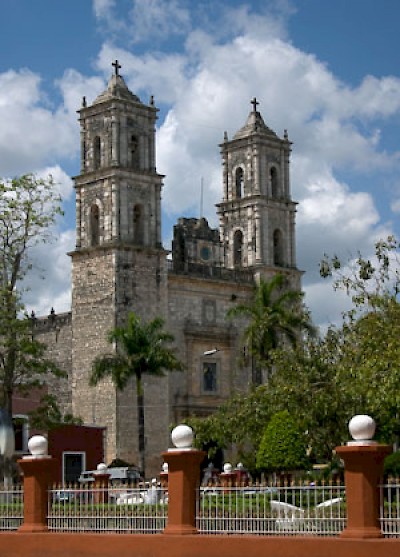

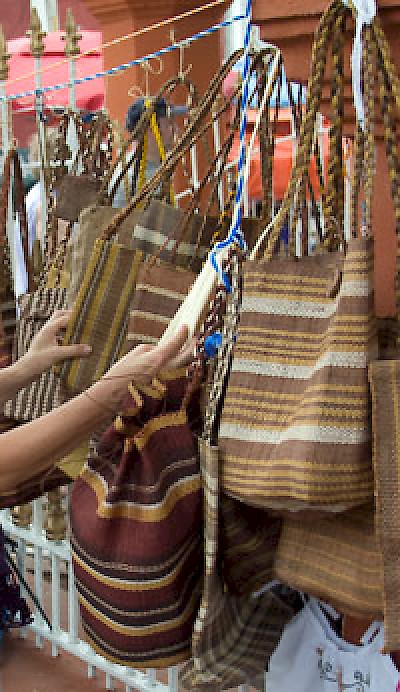

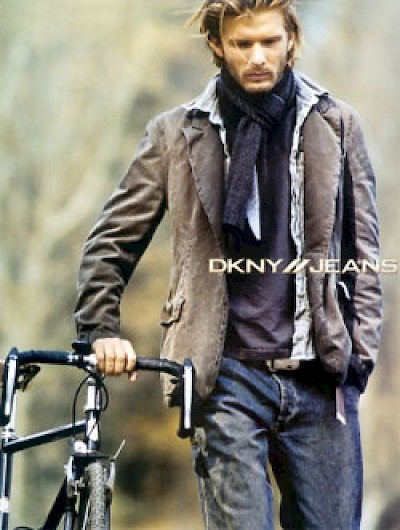

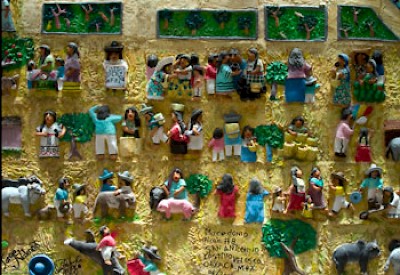


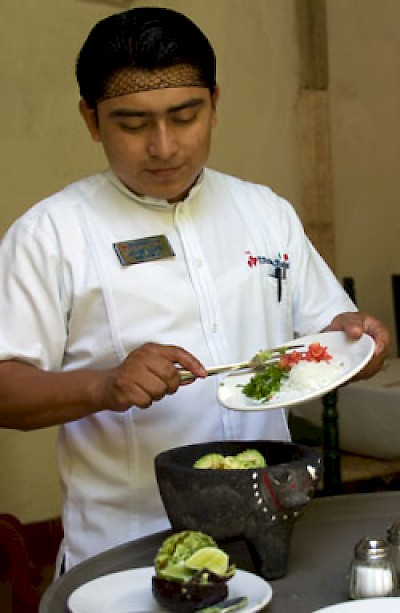

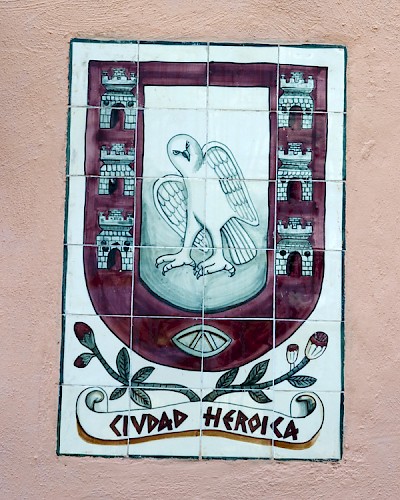

Comments
ValldolidCalling 9 years ago
So true, Valladolid has so much more going on than one would notice just breezing through. There is also a vibrant new music scene going on there with mix of Valladolid musicians (some from musician families going back for generations), along with some equally creative musicians from the States, and now, with new people just starting to arrive from other parts of Yucatan and even Mexico city- because they heard about the exciting things happening music-wise there. The musicians are mixing it up, those from different genres getting together, doing new things. Pretty interesting- and refreshing!
Reply
Liz conover 10 years ago
Great article about Vallodolid- thank you
The style maker of the town, Nicolas Malleville is the coolest dude in Mexico!
Reply
Sandy 10 years ago
I have had a massage at Coqui Coqui Valladolid and it was sumptuous! The space is open air with billowing curtains surrounded by lovely plants. You feel a million miles away from a city or any earthly place. You can begin with a rinse in a giant rock-walled and glass shower or a soak in the long pool on the terrace.. Towel off with thick soft towels. And lay down for a terrific massage experience. Then they recommend you take a bath in those claw-foot tubs to seal the oil into your very relaxed body. So relaxing (and soft) you may need help out of the tub to dry with another deep-pile towel before chilling on the rattan chaises as you sip some water and prepare yourself for reality once again.
Reply
(0 to 3 comments)